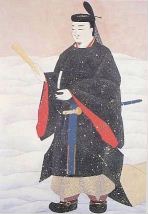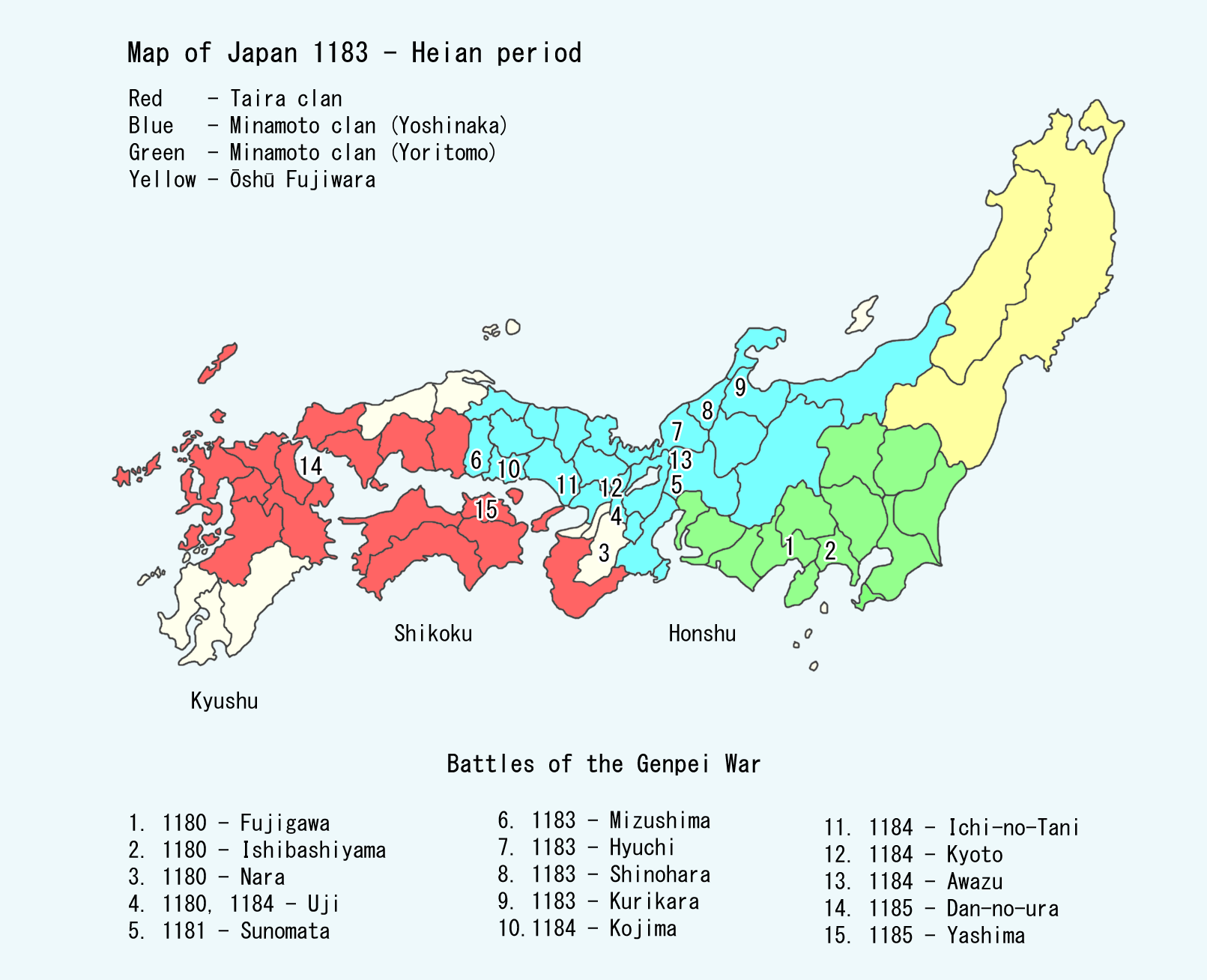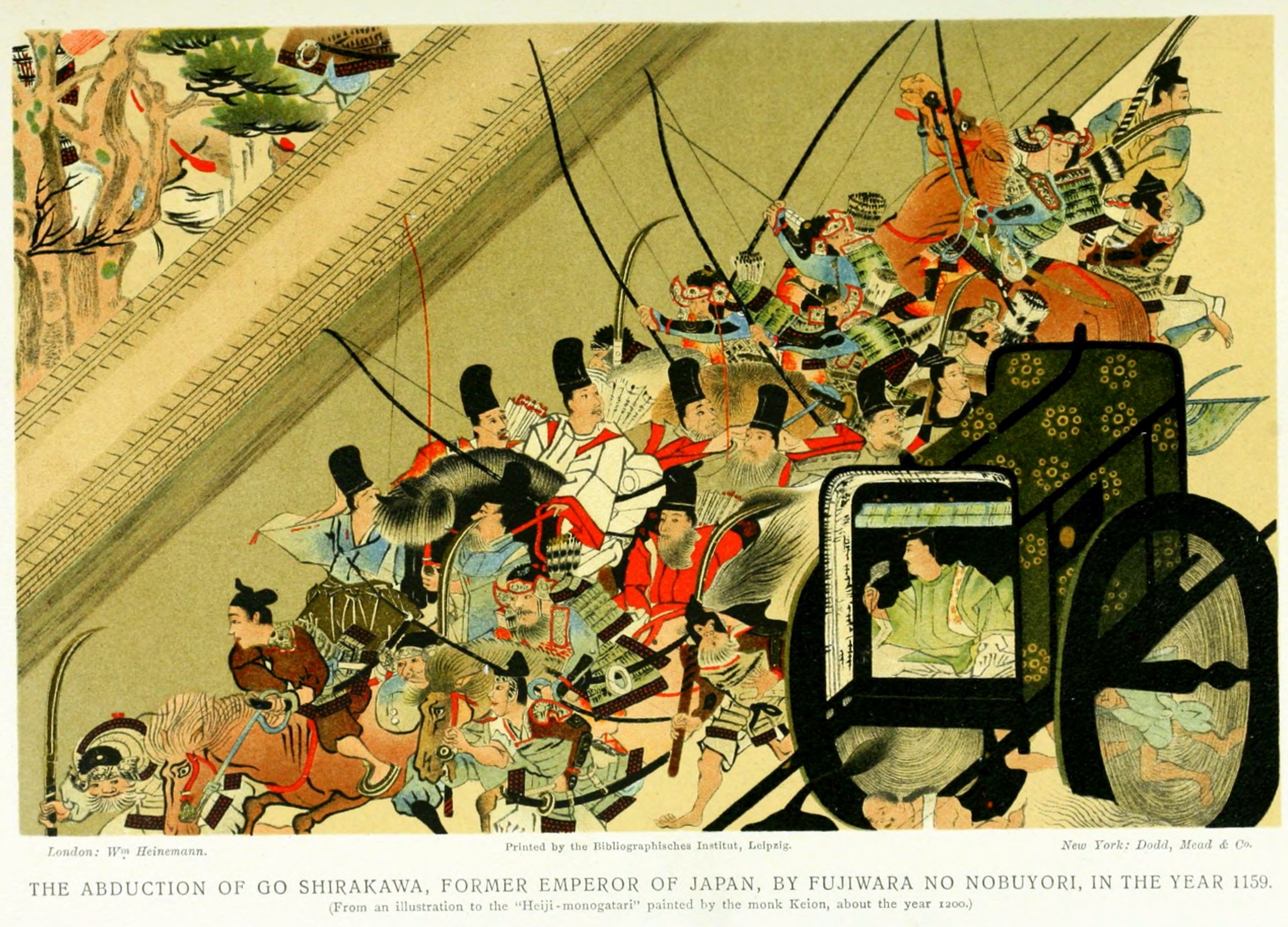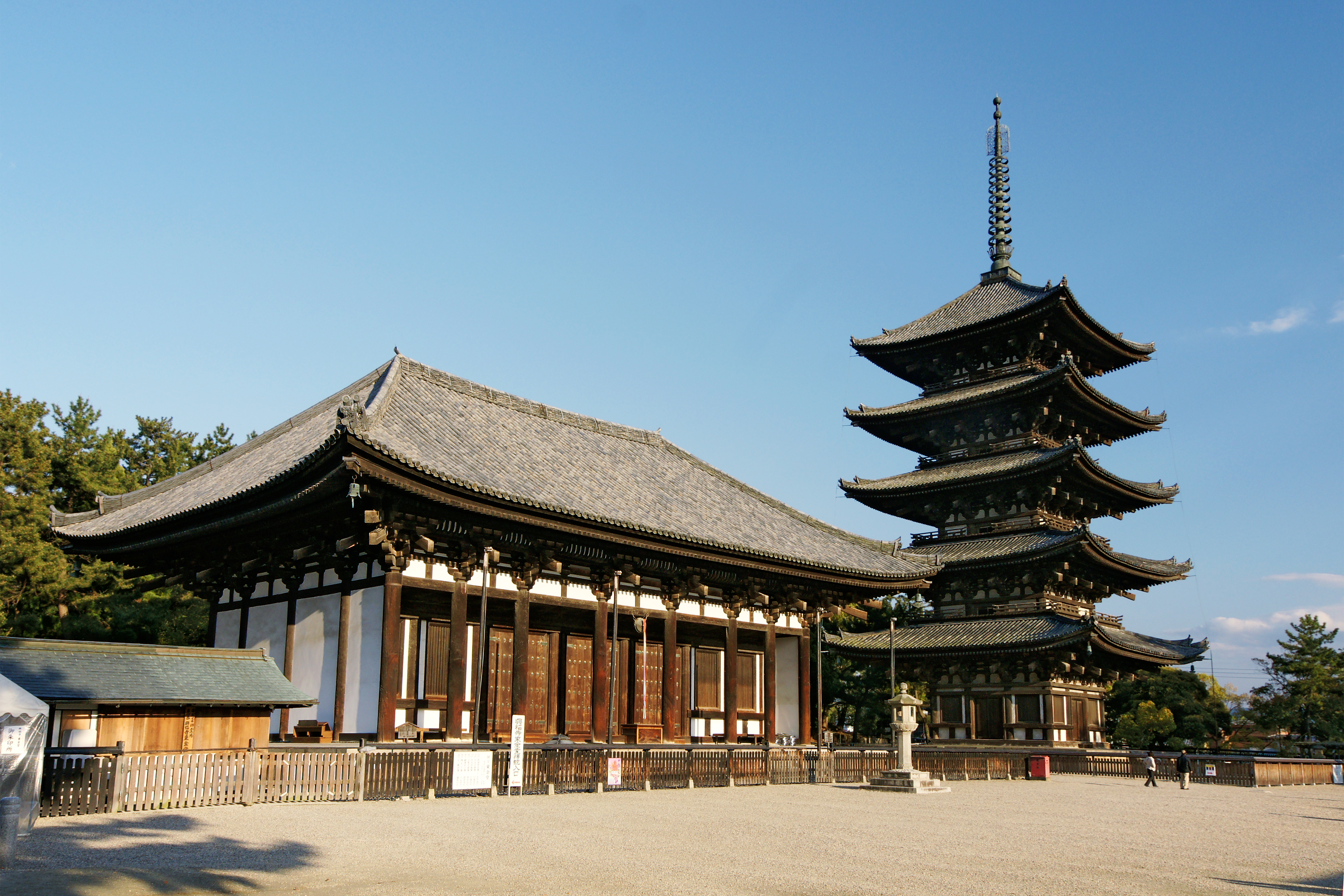|
Statue Of Chōgen
The Statue of Chōgen is a 13th century Japanese Buddhist sculpture depicting Chōgen, the head priest of Tōdai-ji in his 80s. Attributed to the artists Unkei or Kaikei, the wood sculpture is part of the Kei school of Buddhist sculpture, which gained prominence during the early days of the Kamakura period in the aftermath of the Genpei War. Recognized for its realism and seen as a masterpiece of Japanese art, it is designated a National Treasure of Japan, and is currently housed in the ''Shunjō-dō'' of Tōdai-ji. Background Shunjōbō Chōgen was a priest of the Shingon sect, with training at Daigo-ji, who made multiple trips to Song China, as part of the centuries long exchange between Japan and China, which includes the expansion and dissemination of Buddhism. In 1180, the Siege of Nara ordered by Taira no Kiyomori and helmed by Taira no Shigehira severely damaged the city of Nara. Kōfuku-ji was razed, and the Daibutsu-den of Tōdai-ji was severely damaged, leaving onl ... [...More Info...] [...Related Items...] OR: [Wikipedia] [Google] [Baidu] |
Unkei
was a Japanese sculptor of the Kei school, which flourished in the Kamakura period. He specialized in statues of the Buddha and other important Buddhist figures. Unkei's early works are fairly traditional, similar in style to pieces by his father, Kōkei. However, the sculptures he produced for the Tōdai-ji in Nara show a flair for realism different from anything Japan had seen before. Today, Unkei is the best known of the Kei artists, and many art historians consider him its "most distinguished member".Varley 94. Career Many extant works are said to be his, but the first that can be attributed to him with any certainty is a Dainichi Nyorai at Enjō-ji in Nara (1176). Unkei was a devout Buddhist, and records from 1183 (Heian period end) show that he transcribed two copies of the '' Lotus Sutra'' with the aid of two calligrapher monks and a woman sponsor named Akomaro. In the works' colophon, Unkei gives the names of all involved in performing the ritual obeisance ('' raiha ... [...More Info...] [...Related Items...] OR: [Wikipedia] [Google] [Baidu] |
Song Dynasty
The Song dynasty ( ) was an Dynasties of China, imperial dynasty of China that ruled from 960 to 1279. The dynasty was founded by Emperor Taizu of Song, who usurped the throne of the Later Zhou dynasty and went on to conquer the rest of the Five Dynasties and Ten Kingdoms period#Ten Kingdoms, Ten Kingdoms, ending the Five Dynasties and Ten Kingdoms period. The Song frequently came into conflict with the contemporaneous Liao dynasty, Liao, Western Xia and Jin dynasty (1115–1234), Jin dynasties in northern China. After retreating to southern China following attacks by the Jin dynasty, the Song was eventually conquered by the Mongol-led Yuan dynasty. The History of the Song dynasty, dynasty's history is divided into two periods: during the Northern Song (; 960–1127), the capital was in the northern city of Bianjing (now Kaifeng) and the dynasty controlled most of what is now East China. The #Southern Song, 1127–1279, Southern Song (; 1127–1279) comprise the period following ... [...More Info...] [...Related Items...] OR: [Wikipedia] [Google] [Baidu] |
Nara National Museum
The is one of the pre-eminent national art museums in Japan. Introduction The Nara National Museum is located in Nara, which was the capital of Japan from 710 to 784. Katayama Tōkuma (1854–1917) designed the original building, which is a representative Western-style building of the Meiji period and has been designated an Important Cultural Property in Japan. Junzō Yoshimura (1908–1997) designed a supplemental building in 1973. Collections The museum is noted for its collection of Buddhist art, including images, sculpture, and altar articles. The museum houses and displays works of art belonging to temples and shrines in the Nara area. Properties kept in the Shōsōin repository are exhibited each year in the autumn. In the museum's collection is the 12th-century , 11th or 12th-century mandala Jōdo mandara-zu, and the 9th-century sculpture of the seated Buddha Yakushi. History The Nara National Museum was established in 1889 as the Imperial Nara Museum ''(帝国奈 ... [...More Info...] [...Related Items...] OR: [Wikipedia] [Google] [Baidu] |
Genkō Shakusho
The ''Genkō Shakusho'' (元亨釈書) is the first Japanese Buddhist history. It was written during the Kamakura period in Classical Chinese by the famous Rinzai monk Kokan Shiren (1278–1346) and in total consists of 30 scrolls.Foguangshan 1989 Kokan Shiren wrote the ''Genkō Shakusho'' in 1322; the literal translation of the title is the " Genkō Era Buddhist History." In the introduction to the work, Kokan wrote that he was shamed into writing it after the Chinese monk Yishan Yining expressed his surprise that no such history existed in Japan. The book was first published between 1346–1377.Muller 2019 It covers a span of seven hundred years in Japanese Buddhist history and biographies from its introduction into Japan until the late Kamakura period. It was accepted into the Buddhist Tripitaka during the Nanboku-chō period The , also known as the Northern and Southern Courts period, was a period in Japanese history between 1336-1392 CE, during the formative years of the ... [...More Info...] [...Related Items...] OR: [Wikipedia] [Google] [Baidu] |
Rōben
(689 – 773), also known as Ryōben, was a Japanese Buddhist monk of the Kegon sect, and clerical founder of the Tōdai-ji temple in Nara, Nara Prefecture, Japan. He is popularly known as the . His life spanned the late Asuka period (538 – 710) to the early Nara period (710 – 794), a period associated with the establishment of Buddhism in Japan. Early life According to tradition, Rōben was born either in either Ōmi Province in present-day Shiga Prefecture or Sagami Province in present-day Kanagawa Prefecture. Sagami is considered the more likely location. According to legend as a young baby, Rōben was snatched by an eagle and dropped off over a pine tree in front of what is now the Nigatsu-dō Hall. Rōben was raised as a monk, and reunited with his mother 30 years later. In one version of the story, Rōben wore an amulet of Kannon Bodhisattva since he was a baby, which his mother recognized when she came to Nara as a pilgrim. Records with the Ministry o ... [...More Info...] [...Related Items...] OR: [Wikipedia] [Google] [Baidu] |
Fujiwara Clan
The was a powerful family of imperial regents in Japan, descending from the Nakatomi clan and, as legend held, through them their ancestral god Ame-no-Koyane. The Fujiwara prospered since ancient times and dominated the imperial court until the Meiji Restoration in 1868. They held the title of Ason. The abbreviated form is . The 8th century clan history states the following at the biography of the clan's patriarch, Fujiwara no Kamatari (614–669): "Kamatari, the Inner Palace Minister who was also called ‘Chūrō'',''’ was a man of the Takechi district of Yamato Province. His forebears descended from Ame no Koyane no Mikoto; for generations they had administered the rites for Heaven and Earth, harmonizing the space between men and the gods. Therefore, it was ordered their clan was to be called Ōnakatomi" The clan originated when the founder, Nakatomi no Kamatari (614–669) of the Nakatomi clan, was rewarded by Emperor Tenji with the honorific "Fujiwara"after the w ... [...More Info...] [...Related Items...] OR: [Wikipedia] [Google] [Baidu] |
Taira Clan
The was one of the four most important Japanese clans, clans that dominated Japanese politics during the Heian period, Heian period of History of Japan, Japanese history – the others being the Minamoto clan, Minamoto, the Fujiwara clan, Fujiwara, and the Tachibana clan (kuge), Tachibana. The clan is divided into four major groups, named after the Emperor of Japan, emperors they descended from: Emperor Kanmu, Kanmu Heishi, Emperor Ninmyō, Ninmyō Heishi, Emperor Montoku, Montoku Heishi, and Emperor Kōkō, Kōkō Heishi, the most influential of which was the Kanmu Heishi line. In the twilight of the Heian period, the Taira controlled the boy emperor Emperor Antoku, Antoku (himself the grandson of the powerful ''Kugyō'' Taira no Kiyomori) and had effectively dominated the Imperial capital of Heian-kyō, Heian. However, they were opposed by their rivals the Minamoto clan (the Genji), which culminated in the Genpei War (1180–1185 AD). The five-year-long war concluded with a d ... [...More Info...] [...Related Items...] OR: [Wikipedia] [Google] [Baidu] |
Minamoto No Yoritomo
was the founder and the first shogun of the Kamakura shogunate, ruling from 1192 until 1199, also the first ruling shogun in the history of Japan.Nussbaum, Louis-Frédéric. (2005). "Minamoto no Yoriie" in . He was the husband of Hōjō Masako who acted as regent (''shikken'') after his death. Yoritomo was the son of Minamoto no Yoshitomo and belonged to Seiwa Genji's prestigious Kawachi Genji family. After successfully maneuvering himself to the position of rightful heir of the Minamoto clan, he led his clan against the Taira clan, Taira from his capital in Kamakura, beginning the Genpei War in 1180. After five years of civil war, the Minamoto clan finally defeated the Taira in the Battle of Dan-no-ura in 1185. Yoritomo established the supremacy of the samurai caste and the first shogunate (''bakufu'') which was to be centered around Kamakura, thus beginning the History of Japan#Feudal Japan, feudal age in Japan, which lasted until the 17th century. Early life Yoritomo was t ... [...More Info...] [...Related Items...] OR: [Wikipedia] [Google] [Baidu] |
Emperor Go-Shirakawa
was the 77th emperor of Japan, according to the traditional order of succession. His de jure reign spanned the years from 1155 through 1158, though arguably he effectively maintained imperial power for almost thirty-seven years through the ''insei'' system – scholars differ as to whether his rule can be truly considered part of the ''insei'' system, given that the Hōgen Rebellion undermined the imperial position. However, it is broadly acknowledged that by politically outmaneuvering his opponents, he attained greater influence and power than the diminished authority of the emperor's position during this period would otherwise allow. Posthumously, this 12th-century sovereign was named after the 11th-century Emperor Shirakawa. ''Go-'' (後), translates literally as "later"; and thus, he is sometimes called the "Later Emperor Shirakawa", or in some older sources, may be identified as "Shirakawa, the second" or as "Shirakawa II". Unusually, the years of Go-Shirakawa's reign ar ... [...More Info...] [...Related Items...] OR: [Wikipedia] [Google] [Baidu] |
Shōsōin
The is the wikt:treasure house, treasure house of Tōdai-ji Temple in Nara, Nara, Nara, Japan. The building is in the ''azekura'' (log-cabin) style with a raised floor. It lies to the northwest of the Great Buddha Hall. The Shōsō-in houses artifacts connected to Emperor Shōmu (聖武天皇)(701–756) and Empress Kōmyō (光明皇后)(701–760), as well as arts and crafts of the Tenpyō, Tempyō (天平) era of History of Japan, Japanese history. History The construction of the Tōdai-ji Buddhist temple complex was ordained by Emperor Shōmu as part of a national project of Buddhist temple construction. During the Tenpyō, Tempyō period, the years during which Emperor Shōmu reigned, multiple disasters struck Japan as well as political uproar and epidemics. Because of these reasons Emperor Shōmu launched a project of provincial temples. The Tōdai-ji was appointed as the head temple of these provincial temples. Emperor Shōmu was a strong supporter of Buddhism and he tho ... [...More Info...] [...Related Items...] OR: [Wikipedia] [Google] [Baidu] |
Kōfuku-ji
is a Buddhist temple that was once one of the powerful Seven Great Temples in the city of Nara, Japan. The temple is the national headquarters of the Hossō school. It is part of Historic Monuments of Ancient Nara, a World Heritage Site. History Kōfuku-ji has its origin as a temple that was established in 669 by Kagami-no-Ōkimi (), the wife of Fujiwara no Kamatari, wishing for her husband's recovery from illness. Its original site was in Yamashina, Yamashiro Province (present-day Kyoto). In 672, the temple was moved to Fujiwara-kyō, the first planned Japanese capital to copy the orthogonal grid pattern of Chang'an. In 710, the temple was dismantled for the second time and moved to its present location, on the east side of the newly constructed capital, Heijō-kyō, today's Nara. Kōfuku-ji was the Fujiwara's tutelary temple, and enjoyed prosperity for as long as the family did. The temple was not only an important center for the Buddhist religion, but also retained ... [...More Info...] [...Related Items...] OR: [Wikipedia] [Google] [Baidu] |
Nara (city)
is the capital city of Nara Prefecture, Japan. , Nara has an estimated population of 367,353 according to World Population Review, making it the largest city in Nara Prefecture and sixth-largest in the Kansai region of Honshu. Nara is a core city located in the northern part of Nara Prefecture bordering the Kyoto Prefecture. Nara was the capital of Japan during the Nara period from 710 to 784 as the seat of the Emperor before the capital was moved to Nagaoka-kyō, except for the years 740 to 745, when the capital was placed in Kuni-kyō, Naniwa-kyō and Shigaraki Palace. Nara is home to eight major historic temples, shrines, and heritage sites, specifically Tōdai-ji, Saidai-ji, Kōfuku-ji, Kasuga Shrine, Gangō-ji, Yakushi-ji, Tōshōdai-ji, and the Heijō Palace, together with Kasugayama Primeval Forest, collectively form the Historic Monuments of Ancient Nara, a UNESCO World Heritage Site. Etymology By the Heian period, a variety of different characters had ... [...More Info...] [...Related Items...] OR: [Wikipedia] [Google] [Baidu] |








